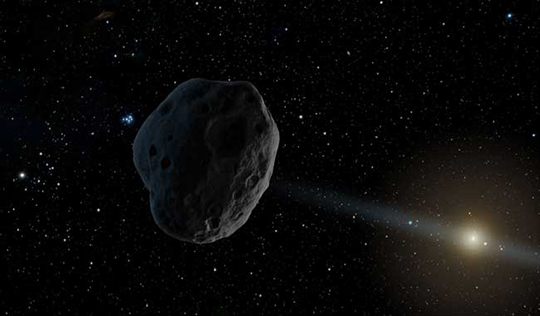Washington, Jan 2: A rare comet discovered by NASA scientists will be visible using just binoculars to skywatchers on Earth this week for the first time, before the object heads back into outer reaches of the solar system for an orbit lasting thousands of years.

The comet, C/2016 U1 NEOWISE, "has a good chance of becoming visible through a good pair of binoculars, although we can't be sure because a comet's brightness is notoriously unpredictable," said Paul Chodas, manager of NASA's Centre for Near-Earth Object (NEO) Studies at the Jet Propulsion Laboratory in the US.
As seen from the northern hemisphere during the first week of 2017, comet C/2016 U1 NEOWISE will be in the southeastern sky shortly before dawn.
It is moving farther south each day and it will reach its closest point to the Sun, inside the orbit of Mercury, on January 14, before heading back out to the outer reaches of the solar system for an orbit lasting thousands of years.
While it will be visible to skywatchers at Earth, it is not considered a threat to our planet either.
NASA's NEOWISE mission has recently discovered some celestial objects travelling through our neighbourhood, including one on the blurry line between asteroid and comet.
An object called 2016 WF9 was detected by the NEOWISE project on November 27 last year.
It is in an orbit that takes it on a scenic tour of our solar system. At its farthest distance from the Sun, it approaches Jupiter's orbit.
Over the course of 4.9 Earth-years, it travels inward, passing under the main asteroid belt and the orbit of Mars until it swings just inside Earth's own orbit. After that, it heads back toward the outer solar system.
Objects in these types of orbits have multiple possible origins; it might once have been a comet, or it could have strayed from a population of dark objects in the main asteroid belt.
2016 WF9 will approach Earth's orbit on February 25 this year. At a distance of nearly 51 million kilometres from Earth, this pass will not bring it particularly close.
The trajectory of 2016 WF9 is well understood, and the object is not a threat to Earth for the foreseeable future.
A different object, discovered by NEOWISE a month earlier, is more clearly a comet, releasing dust as it nears the Sun.
NEOWISE is the asteroid-and-comet-hunting portion of the Wide-Field Infrared Survey Explorer (WISE) mission.
2016 WF9 is relatively large: roughly 0.5 to 1 kilometre across. It is also rather dark, reflecting only a few percent of the light that falls on its surface.
This body resembles a comet in its reflectivity and orbit, but appears to lack the characteristic dust and gas cloud that defines a comet.
"2016 WF9 could have cometary origins," said Deputy Principal Investigator James Bauer at JPL.
"This object illustrates that the boundary between asteroids and comets is a blurry one; perhaps over time this object has lost the majority of the volatiles that linger on or just under its surface," said Bauer.





Comments
Add new comment